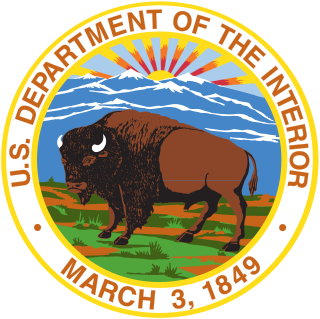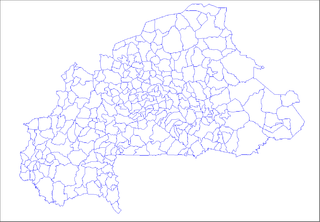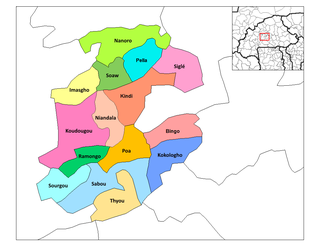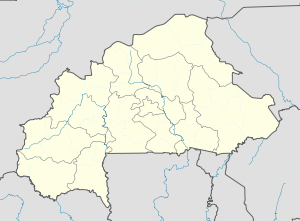
The United States Department of State (DOS), commonly referred to as the State Department, is the federal executive department that advises the President and conducts international relations. Equivalent to the foreign ministry of other countries, it was established in 1789 as the nation's first executive department. The current Secretary of State is Mike Pompeo, who ascended to the office in April 2018 after Rex Tillerson resigned.
The United States Armed Forces are the military forces of the United States of America. It consists of the Army, Marine Corps, Navy, Air Force, and Coast Guard. The President of the United States is the Commander-in-Chief of the Armed Forces and forms military policy with the Department of Defense (DoD) and Department of Homeland Security (DHS), both federal executive departments, acting as the principal organs by which military policy is carried out. All five armed services are among the seven uniformed services of the United States.

The Cabinet of the United States is part of the executive branch of the federal government of the United States. The Cabinet's role, inferred from the language of the Opinion Clause of the Constitution is to serve as an advisory body to the President of the United States. Additionally, the Twenty-fifth Amendment authorizes the Vice President, together with a majority of certain members of the Cabinet, to declare the president "unable to discharge the powers and duties of his office". Among the senior officers of the Cabinet are the Vice President and the heads of the federal executive departments, all of whom—if eligible—are in the line of succession. Members of the Cabinet serve at the pleasure of the President, who can dismiss them at will for no cause. All federal public officials, including Cabinet members, are also subject to impeachment by the House of Representatives and trial in the Senate for "treason, bribery, and other high crimes and misdemeanors".

The Secretary of State is a senior official of the federal government of the United States of America, and as head of the United States Department of State, is principally concerned with foreign policy and is considered to be the U.S. government's equivalent of a Minister for Foreign Affairs.
In the administrative divisions of France, the department is one of the three levels of government below the national level, between the administrative regions and the commune. Ninety-six departments are in metropolitan France, and five are overseas departments, which are also classified as regions. Departments are further subdivided into 334 arrondissements, themselves divided into cantons; the last two have no autonomy, and are used for the organisation of police, fire departments, and sometimes, elections.

The Secretary of Defense (SecDef) is the leader and chief executive officer of the United States Department of Defense, the executive department of the Armed Forces of the U.S. The Secretary of Defense's position of command and authority over the U.S. military is second only to that of the President and Congress, respectively. This position corresponds to what is generally known as a Defense Minister in many other countries. The Secretary of Defense is appointed by the President with the advice and consent of the Senate, and is by custom a member of the Cabinet and by law a member of the National Security Council.

The United States Department of Justice (DOJ), also known as the Justice Department, is a federal executive department of the U.S. government, responsible for the enforcement of the law and administration of justice in the United States, equivalent to the justice or interior ministries of other countries. The department was formed in 1870 during the Ulysses S. Grant administration.

The Department of the Treasury (USDT) is an executive department and the treasury of the United States federal government. Established by an Act of Congress in 1789 to manage government revenue, the Treasury prints all paper currency and mints all coins in circulation through the Bureau of Engraving and Printing and the United States Mint, respectively; collects all federal taxes through the Internal Revenue Service; manages U.S. government debt instruments; licenses and supervises banks and thrift institutions; and advises the legislative and executive branches on matters of fiscal policy.

The United States Department of Homeland Security (DHS) is a cabinet department of the U.S. federal government with responsibilities in public security, roughly comparable to the interior or home ministries of other countries. Its stated missions involve anti-terrorism, border security, immigration and customs, cyber security, and disaster prevention and management. It was created in response to the September 11 attacks and is the youngest U.S. cabinet department.

The United States Department of the Interior (DOI) is the United States federal executive department of the U.S. government responsible for the management and conservation of most federal lands and natural resources, and the administration of programs relating to Native Americans, Alaska Natives, Native Hawaiians, territorial affairs, and insular areas of the United States. About 75% of federal public land is managed by the department, with most of the remainder managed by the United States Department of Agriculture's United States Forest Service.

The United States Department of Education, also referred to as the ED for (the) Education Department, is a Cabinet-level department of the United States government. It began operating on May 4, 1980, having been created after the Department of Health, Education, and Welfare was split into the Department of Education and the Department of Health and Human Services by the Department of Education Organization Act, which President Jimmy Carter signed into law on October 17, 1979.

A department store is a retail establishment offering a wide range of consumer goods in different product categories known as "departments". In modern major cities, the department store made a dramatic appearance in the middle of the 19th century, and permanently reshaped shopping habits, and the definition of service and luxury. Similar developments were under way in London, in Paris and in New York.

The provinces of Burkina Faso are divided into 351 departments, whose urbanized areas are grouped into the same commune (municipality) with the same name as the department. The 351 communes created in those departments have three kinds of status :

The Department of Defense is an executive branch department of the federal government charged with coordinating and supervising all agencies and functions of the government concerned directly with national security and the United States Armed Forces. The department is the largest employer in the world, with nearly 1.3 million active duty servicemen and women as of 2016. Adding to its employees are over 826,000 National Guardsmen and Reservists from the four services, and over 732,000 civilians bringing the total to over 2.8 million employees. Headquartered at the Pentagon in Arlington, Virginia, just outside Washington, D.C., the DoD's stated mission is to provide "the military forces needed to deter war and ensure our nation's security".

Kougsin is a town in the Sourgou Department of Boulkiemdé Province in central western Burkina Faso. It has a population of 1,649.

Lâ is a town in the Sourgou Department of Boulkiemdé Province in central western Burkina Faso. It has a population of 2,180.

Ouoro is a town in the Sourgou Department of Boulkiemdé Province in central western Burkina Faso. It has a population of 3,519.

Rogho is a town in the Sourgou Department of Boulkiemdé Province in central western Burkina Faso. It has a population of 2,935.
Death row is a special section of a prison that houses inmates awaiting execution after being convicted of a capital crime. The term is also used figuratively to describe the state of awaiting execution, even in places where no special facility or separate unit for condemned inmates exists. In the United States, after a person is found guilty of a capital offense in death penalty states, the judge will give the jury the option of imposing a death sentence or life imprisonment without the possibility of parole. It is then up to a jury to decide whether to give the death sentence; this usually has to be a unanimous decision. If the jury agrees on death, the defendant will remain on death row during appeal and habeas corpus procedures, which may continue for several years.
















